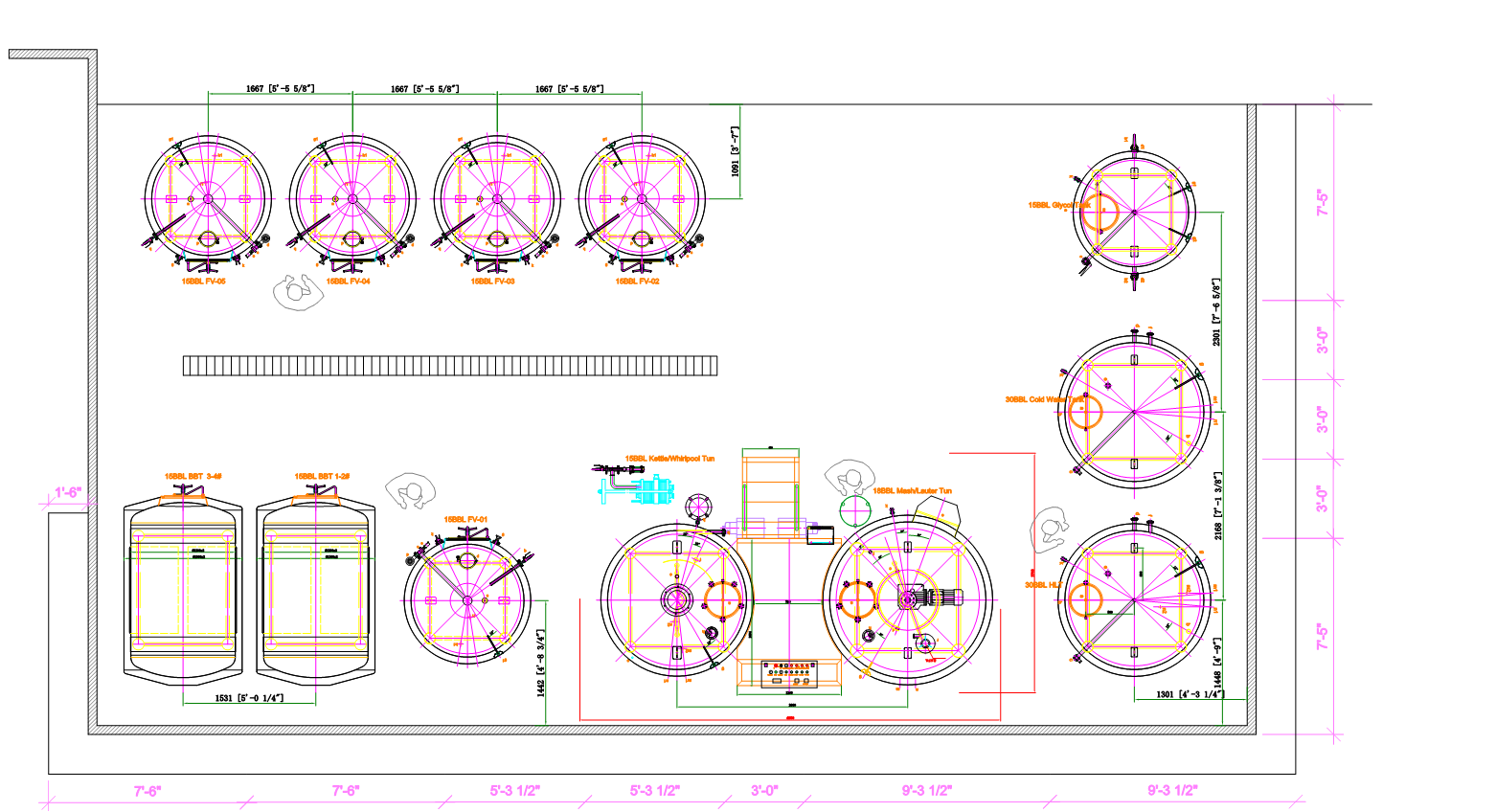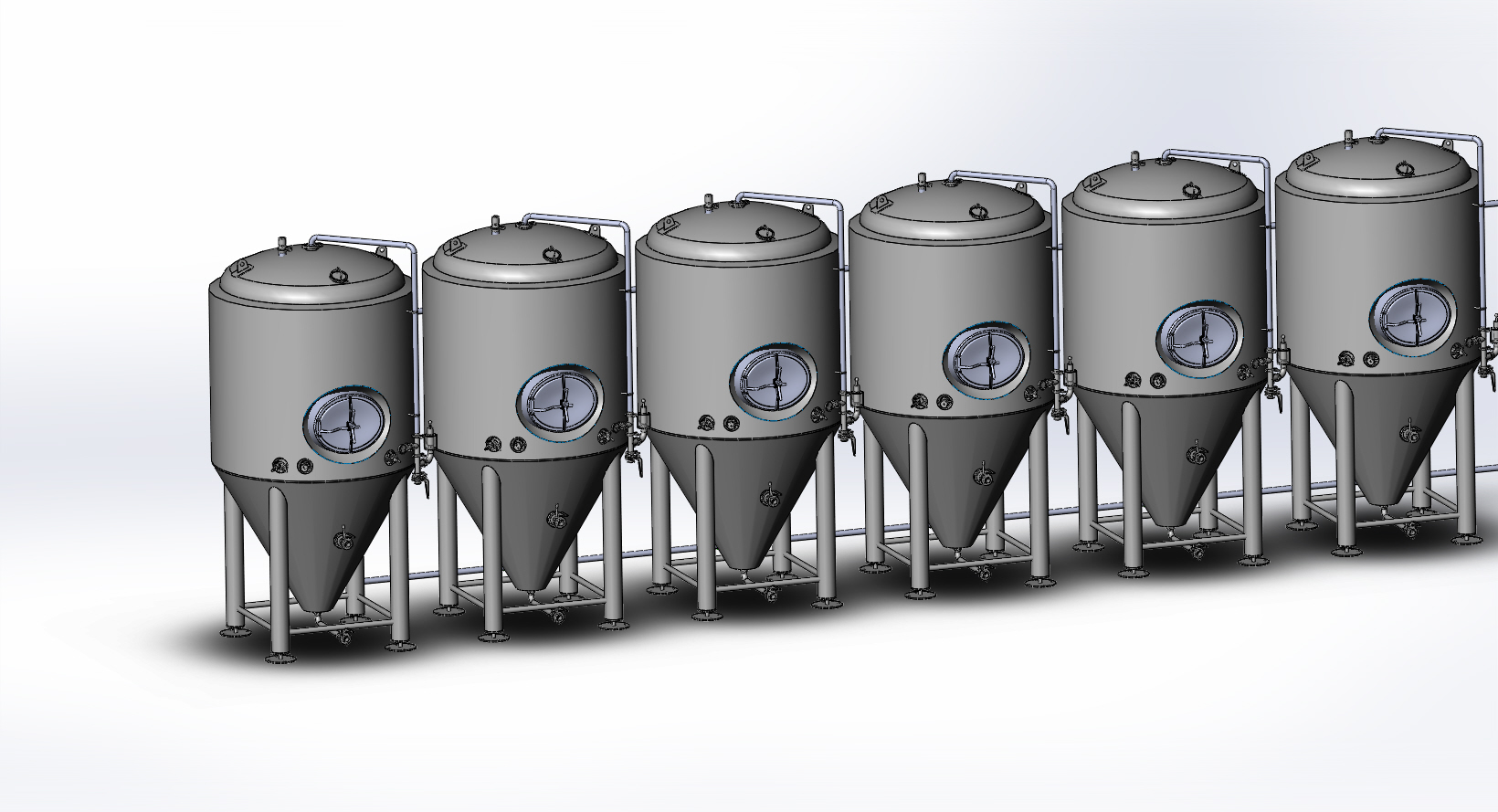
The Importance Of The Brewery Layout Floorplan For Microbreweries

The layout and floorplan of a brewery, particularly the arrangement of beer equipment, play a crucial role in the efficiency, safety, and overall success of a brewery operation. Here are some key reasons highlighting the importance of a well-designed brewery layout floorplan:
1.Optimizing Workflow: A thoughtfully designed layout can streamline the production process. It ensures that each step of the brewing process flows logically, minimizing the need for excessive movement of materials and reducing the risk of errors.
2.Efficiency: A well-organized layout can lead to increased efficiency in both production and labor. For instance, it can reduce the time it takes for employees to move between various stations, leading to higher throughput and lower labor costs.
3.Safety: Safety is of paramount importance in a brewery, given the use of hot liquids, pressurized tanks, and potentially hazardous chemicals. A proper layout considers safety measures, ensuring there’s adequate space for workers to operate machinery safely, and fire exits are accessible.
4.Quality Control: A good brewery layout can help maintain the integrity of the product by segregating various stages of production to prevent contamination. It can also facilitate quality control checks at different stages of the brewing process.
5.Space Utilization: Efficient use of space is important for breweries, as it can save on building costs and reduce overhead. A well-planned layout can make the best use of the available space and allow for future expansion if needed.
6.Equipment Placement: The arrangement of brewing equipment is vital. It should consider factors like the flow of raw materials, accessibility for maintenance and repairs, and the ability to expand or reconfigure equipment as the brewery grows.
7.Regulatory Compliance: Breweries are subject to various regulations and codes. A well-thought-out layout can help ensure that the brewery complies with zoning, health, safety, and environmental regulations.
8.Aesthetic Considerations: A well-designed layout can also enhance the aesthetic appeal of a brewery. This is important for breweries with taprooms or visitor areas, as it can create a more inviting and pleasing environment for customers.
9.Expansion and Growth: Microbreweries often start small and have plans for growth. A good layout allows for future expansion, accommodating additional equipment and production capacity as the brewery becomes more successful.
10.Energy Efficiency: The layout can also impact energy efficiency. For example, positioning tanks and equipment in an efficient sequence can reduce the energy required for heating and cooling processes.
11.Cost Efficiency: A poorly planned layout can lead to inefficiencies, additional labor costs, and increased production times. An optimized layout can result in cost savings by minimizing waste, reducing energy consumption, and increasing overall productivity.
12.Flexibility: The brewery layout should be flexible enough to adapt to changing production needs. As the brewery grows or product lines diversify, a good layout allows for adjustments without a major overhaul.
13.Visibility and Engagement: Many microbreweries have taprooms or visitor areas where customers can see the brewing process. A well-organized layout can enhance the visitor experience, allowing patrons to observe the brewing process while ensuring their safety.
14.Visitor Experience: Many microbreweries have taprooms or visitor areas. A pleasing and efficient layout can enhance the visitor experience, making it more likely for guests to return and become loyal customers.

In conclusion, the layout floorplan of a brewery’s equipment is a critical factor that affects the brewery’s functionality, safety, quality, and ultimately its success. It’s not just about arranging equipment but about creating an environment that promotes efficiency, safety, and product quality. A well-planned layout can provide a solid foundation for a brewery to thrive in a competitive market.



















